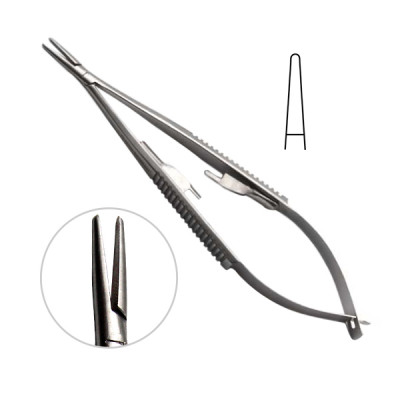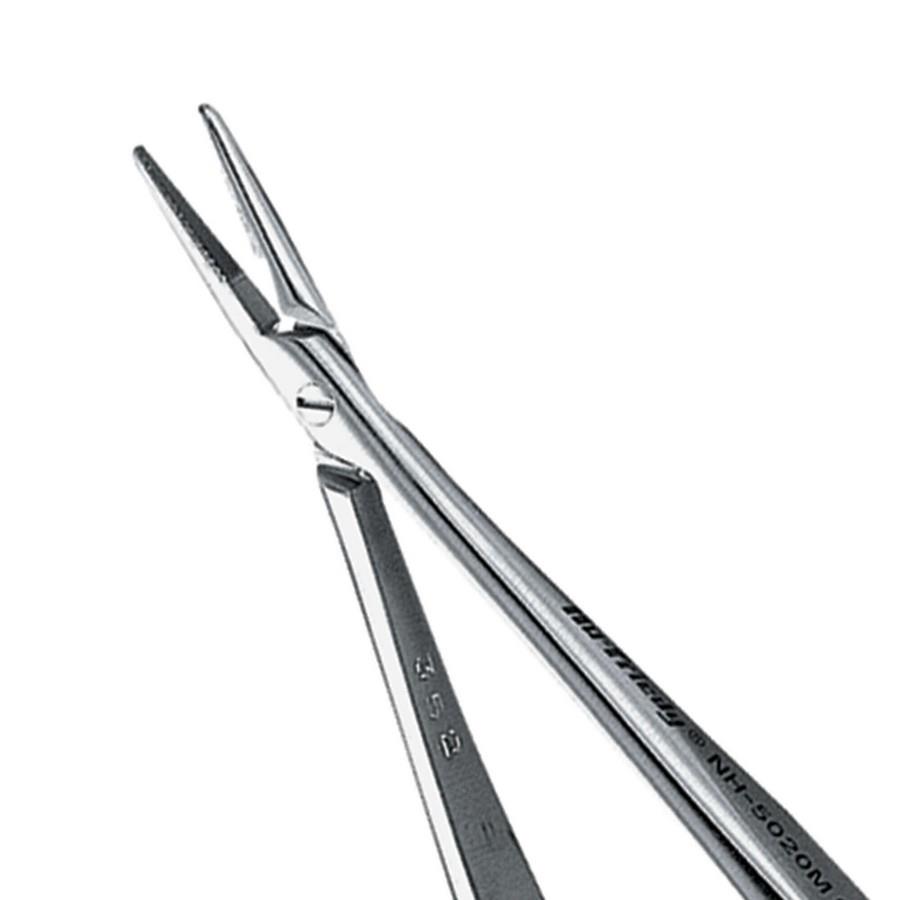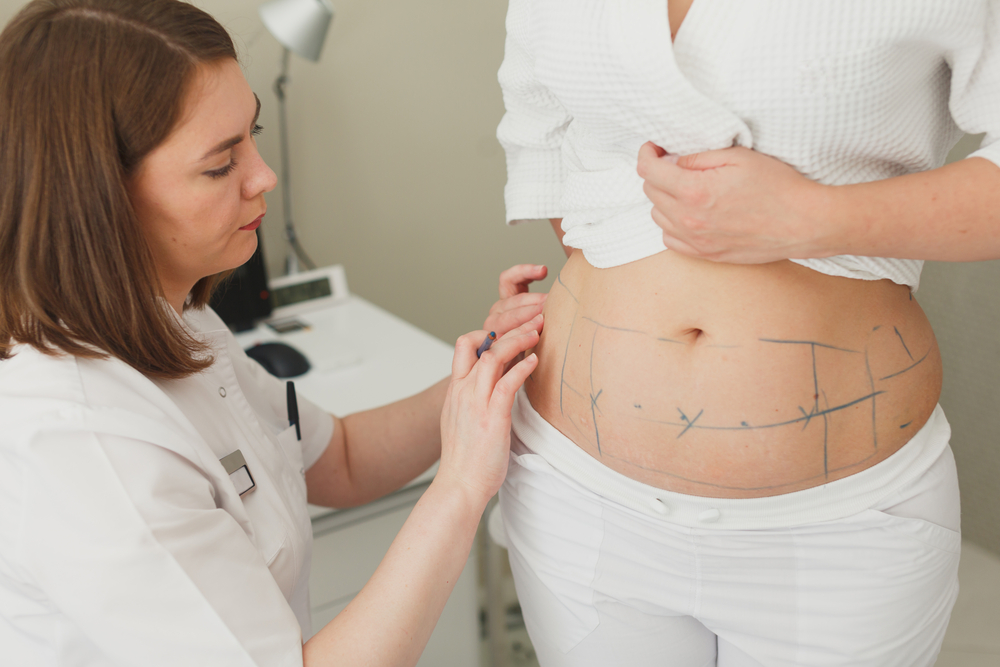Introduction
In the world of surgical tools, precision and reliability are paramount. Surgeons depend on specialized instruments tailored to specific tasks, and for delicate suturing procedures, the Castroviejo needle holder stands out as a vital instrument. This tool, often called the Castro surgical instrument, is essential in procedures requiring careful handling of fine sutures, especially in fields like ophthalmic, cardiovascular, and plastic surgery.
Designed for accuracy and control, the Castroviejo needle holder has become an indispensable surgical toolkit. But what makes this instrument unique, and why is it favored in delicate surgeries? This article dives deep into the features, applications, and benefits of the Castroviejo needle holder, shedding light on its role in modern medicine.
The Castroviejo Needle Holder: A Precision Tool
Named after the renowned ophthalmologist Ramón Castroviejo, the Castroviejo needle holder is specifically crafted to manage tiny needles precisely. Unlike standard needle holders, it offers an ergonomic design that enhances a surgeon’s ability to handle fine sutures delicately and accurately. The tool’s primary components include a slim body, a delicate grip, and a fine tip—all designed to allow smooth, controlled movements during surgery.
Key Features of the Castroviejo Needle Holder:
- Fine-Tip Design: The narrow tips of the Castroviejo needle holder provide a secure grasp on delicate needles, preventing slippage during suturing.
- Ergonomic Handle: Often featuring spring-loaded handles or locking mechanisms, this needle holder ensures ease of control, reducing hand fatigue in lengthy procedures.
- Variety in Lengths: Available in various lengths and styles, the instrument can be adapted to the specific needs of a procedure, providing flexibility across different surgical applications.
- High-Quality Material: Typically made from stainless steel or titanium, the Castroviejo needle holder is durable, resistant to corrosion, and easily sterilized, making it a practical choice for repeat use.
Applications of the Castroviejo Needle Holder
The Castroviejo needle holder is commonly used in fields where precision and delicacy are crucial. Its design suits surgeries involving soft tissues or small, intricate anatomical structures. Here are some key medical fields where this instrument is most valued:
- Ophthalmic Surgery: Given its namesake, the Castroviejo needle holder is widely used in eye surgeries. It enables surgeons to handle fine sutures on delicate eye tissues, especially in procedures like corneal transplants or cataract surgeries.
- Cardiovascular Surgery: Cardiovascular procedures often require fine sutures, and this instrument offers the control necessary to work on tiny blood vessels without compromising patient safety.
- Plastic and Reconstructive Surgery: Precision is essential to ensure functional and aesthetic outcomes in reconstructive procedures. The Castroviejo needle holder allows surgeons to make precise stitches that help minimize scarring and improve healing.
- ENT (Ear, Nose, Throat) Surgery: For procedures in the delicate regions of the ear, nose, and throat, this needle holder aids in suturing without damaging surrounding tissues.

Types of Castroviejo Needle Holders
The Castroviejo needle holder is available in various models, each suited to different surgeries and surgeon preferences. These variations help meet the diverse needs of surgical professionals, from minor adjustments in grip to advanced locking mechanisms.
- Non-Locking Castroviejo Needle Holder: This type of Castroviejo needle holder offers flexibility and quick adjustments, allowing surgeons to release and re-grip needles easily.
- Locking Castroviejo Needle Holder: Designed with a locking mechanism, this model provides stability, holding the needle securely in place for prolonged suturing tasks.
- Micro Castroviejo Needle Holder: For extremely delicate procedures, such as microvascular surgeries, a micro version of the Castroviejo needle holder is available, designed to handle ultra-fine sutures with enhanced precision.
check more latest details about cosmetic surgery instruments
How the Castroviejo Needle Holder Supports Surgical Precision
In delicate surgeries, even the smallest error can have significant consequences. The Castroviejo needle holder, designed with advanced engineering, reduces the likelihood of needle slippage and provides a firm grip. The instrument’s ergonomic design allows for precise control, ensuring that each stitch is placed accurately, reducing tissue trauma, and promoting better healing outcomes.
Moreover, the Castro surgical instrument enables surgeons to complete complex suturing tasks with minimal hand strain. This feature is especially important for procedures that require prolonged concentration and a steady hand, as the Castroviejo needle holder’s design allows the surgeon to work comfortably over extended periods.
Choosing the Right Castroviejo Needle Holder
With several variations available, selecting the right Castroviejo needle holder is crucial for optimizing surgical performance. Surgeons and healthcare facilities should consider the following factors:
- Length and Size: The appropriate length depends on the procedure type and the surgeon’s preference. Shorter holders offer greater control, while longer versions may be useful in deeper surgical fields.
- Locking Mechanism: Some surgeons prefer the flexibility of a non-locking Castroviejo needle holder, while others appreciate the stability of the mechanism.
- Material: Stainless steel is a common choice due to its durability and resistance to corrosion. However, titanium offers a lighter-weight alternative, reducing hand fatigue.
- Handle Design: Look for ergonomic designs with well-crafted grips to ensure comfort during use. Some needle holders come with textured handles to prevent slippage, which can be an added advantage.
Maintenance and Care of the Castroviejo Needle Holder
Proper care is essential for maintaining the quality and longevity of any surgical instrument, including the Castroviejo needle holder. Due to its delicate design, extra attention is needed to prevent damage to its fine tips and mechanisms. Here are some maintenance tips:
- Regular Cleaning and Sterilization: As with all surgical tools, the Castroviejo needle holder must be thoroughly cleaned and sterilized after each use. Avoid harsh cleaning agents that could erode the instrument’s surface over time.
- Inspect for Wear: Routine inspections help detect signs of wear or damage, such as bent tips or loosened locking mechanisms. Replacing or repairing the tool as needed ensures continued precision.
- Safe Storage: Store the needle holder in a designated case to avoid accidental damage. Placing it in a protected environment prevents the delicate tips from bending or breaking.
The Role of Castroviejo Needle Holders in Modern Surgical Practices
In an era of increasingly sophisticated surgical procedures, the demand for precision instruments like the Castroviejo needle holder continues to grow. This tool’s unique design supports the accuracy required in delicate procedures, reinforcing its place in operating rooms worldwide. Surgeons rely on the Castroviejo needle holder for its functional benefits and the confidence it provides in performing complex, high-stakes surgeries.
Conclusion
The Castroviejo needle holder is an exceptional example of how specialized surgical instruments enhance precision and patient outcomes. From ophthalmic and cardiovascular surgeries to plastic and reconstructive procedures, this delicate needle holder supports surgeons in their quest for accuracy and control. Choosing the right Castroviejo needle holder, understanding its care, and recognizing its applications contribute to better surgical practices and patient care.
By integrating the Castroviejo needle holder into their toolkit, surgeons can ensure they have a reliable instrument capable of meeting the high demands of delicate surgeries.




